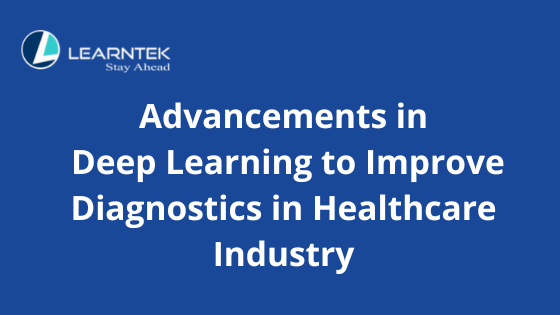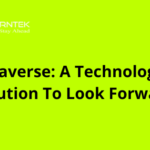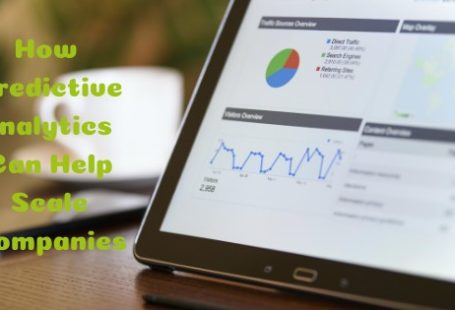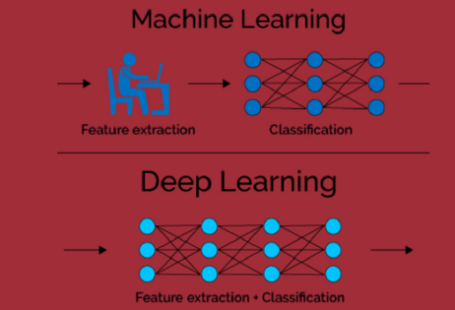For a long time, machine learning, artificial intelligence, and deep learning have gained a lot of popularity. These technologies are transforming numerous industries such as finance, retail, travel, healthcare, manufacturing, and so on. Healthcare is one of those industries which have rapidly adopted these advanced technologies and utilized them the most. Considering the importance of health, medical professionals are always looking for innovative ways to incorporate new technologies and provide significant results.
Deep learning offers game-changing applications in healthcare. Deep learning collects a large amount of information, including patient data, health records, medical reports, and insurance records, and employs neural networks to offer the best results. Deep learning has had a tremendous impact on healthcare, allowing the industry to improve patient monitoring and diagnosis. According to Allied Market Research, the global deep learning market is anticipated to grow at a significant CAGR from 2021 to 2030.
Deep learning is a subtype of machine learning that solves issues that machine learning alone could not address. It uses neural networks to boost computing work and achieve accurate results. In the deep learning technology, the data is filtered through a cascade of several layers, with each subsequent layer using the output from the preceding one to determine its results.
Deep learning in healthcare can discover hidden opportunities and trends in clinical data, allowing medical professionals to provide better treatment to their patients. The multi-layered strategy in deep learning models assists it to complete classification tasks such as detecting subtle abnormalities in medical image data, grouping patients with similar characteristics into risk-based cohorts, or highlighting relationships between symptoms and outcomes within vast quantities of unstructured data. Here are by far the most remarkable deep learning applications in healthcare.
Medical imaging and diagnostics – Deep learning techniques help diagnose by interpreting medical images such as MRI scans, X-rays, and CT scans. The algorithms can spot any risk and indicate irregularities in the medical images.
Drug discovery – Deep learning plays a crucial role in discovering drug combinations. Advanced technologies like machine learning, AI, and deep learning were used to support the development of drugs and vaccines during the pandemic. Deep learning algorithms can efficiently handle clinical, genomic, and population data, and a variety of toolkits can be used to spot trends. Researchers could now conduct faster molecular modeling and predictive analytics in identifying protein structures using machine learning and deep learning.
Personalized medication – It’s easier to assess a patient’s health data, vital symptoms, medical history, medical test results, and other information with deep learning models. As a result, healthcare providers are able to understand each patient in much better way and give them individualized treatment. These game-changing technologies allow for the detection of appropriate and multiple treatment alternatives for various individuals.
Clinical trials made simple – Machine learning and deep learning can be used to conduct predictive analytics in order to explore suitable clinical trial patients and allow scientists to pool people from various data points and sources. Deep learning will also allow seamless trial monitoring with minimal human interaction and errors.
Fraud detection, health insurance improved health records and patient monitoring, and Alzheimer’s disease detection are some other groundbreaking applications of deep learning in the medical industry.
Scientists and researchers continue experimenting with the study of advanced applications in the healthcare sector, thus improving healthcare offerings. Recently, At the American Physical Society’s March meeting, Alison Deatsch of the University of Wisconsin, Madison, spoke about how deep learning can help to diagnose and monitor brain disorders. She outlined that brain abnormalities and neurodegenerative disease are among the most costly diseases in terms of human suffering as well as financial expenditures.
The use of neuroimaging techniques such as MRI, functional MRI, PET, and SPECT can aid in the diagnosis of brain disorders. However, these images are rarely effectively utilized when it comes to analysis. Deatsch and her team created a new deep learning model that can tell the difference between brain scans of Alzheimer’s patients and normal controls. In addition, the team also examined how different aspects affected the model’s performance.
Another eye-catching study is regarding the use of deep learning for the diagnostics of acute ischemic stroke. MD, director of the University of Maryland Medical Intelligent Imaging Justify, Dr. Paul Yi, collaborated with colleagues, and Johns Hopkins University’s Computer Science team, to build a high-performing deep learning system for detecting CTA of the head and LVO. The researchers discovered that the 2D CNNs that used substantially preprocessed images performed much better, with AUCs more than 0.95, whereas 3D CNNs had AUCs ranging from 0.8 to 0.81, regardless of the data preprocessing method used. Dr. Yi believes that the team’s discovery could aid clinical radiologists in stroke care by handling potential surgical emergencies if it is further refined and clinically verified.
Technology has come far with deep learning applications in the healthcare industry. Several other ongoing studies seem promising for the clinical improvements in diagnostics in healthcare.






